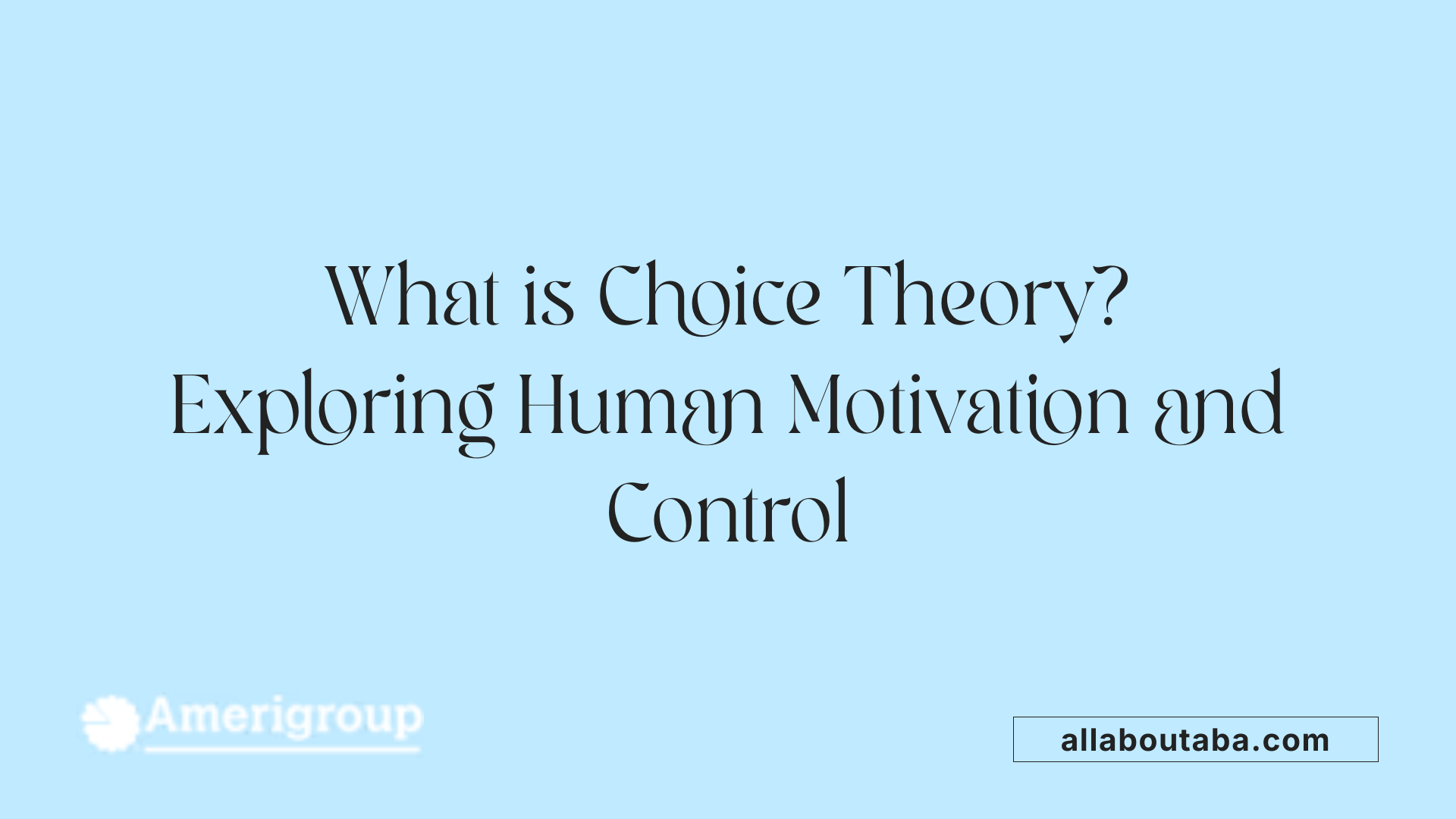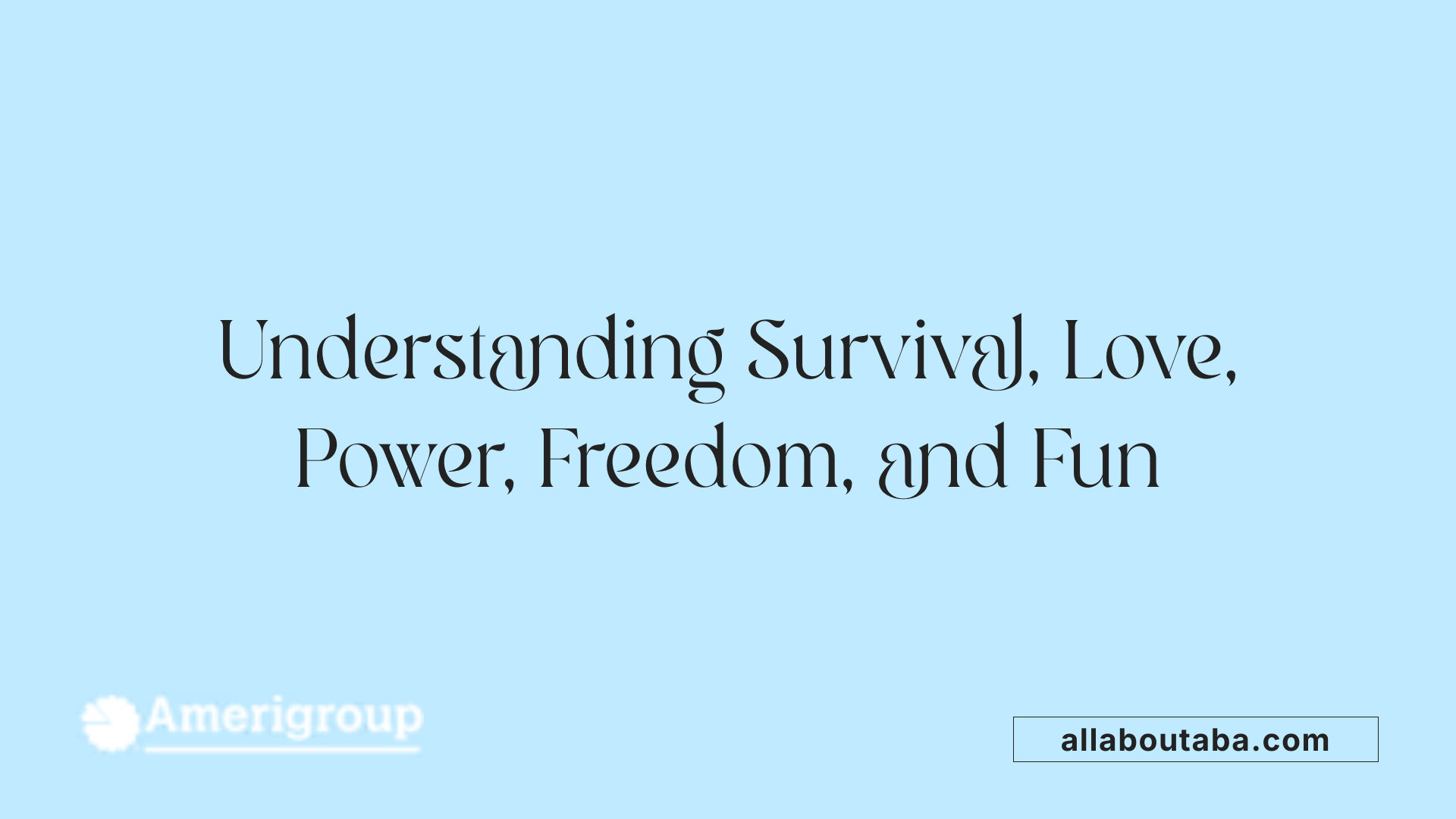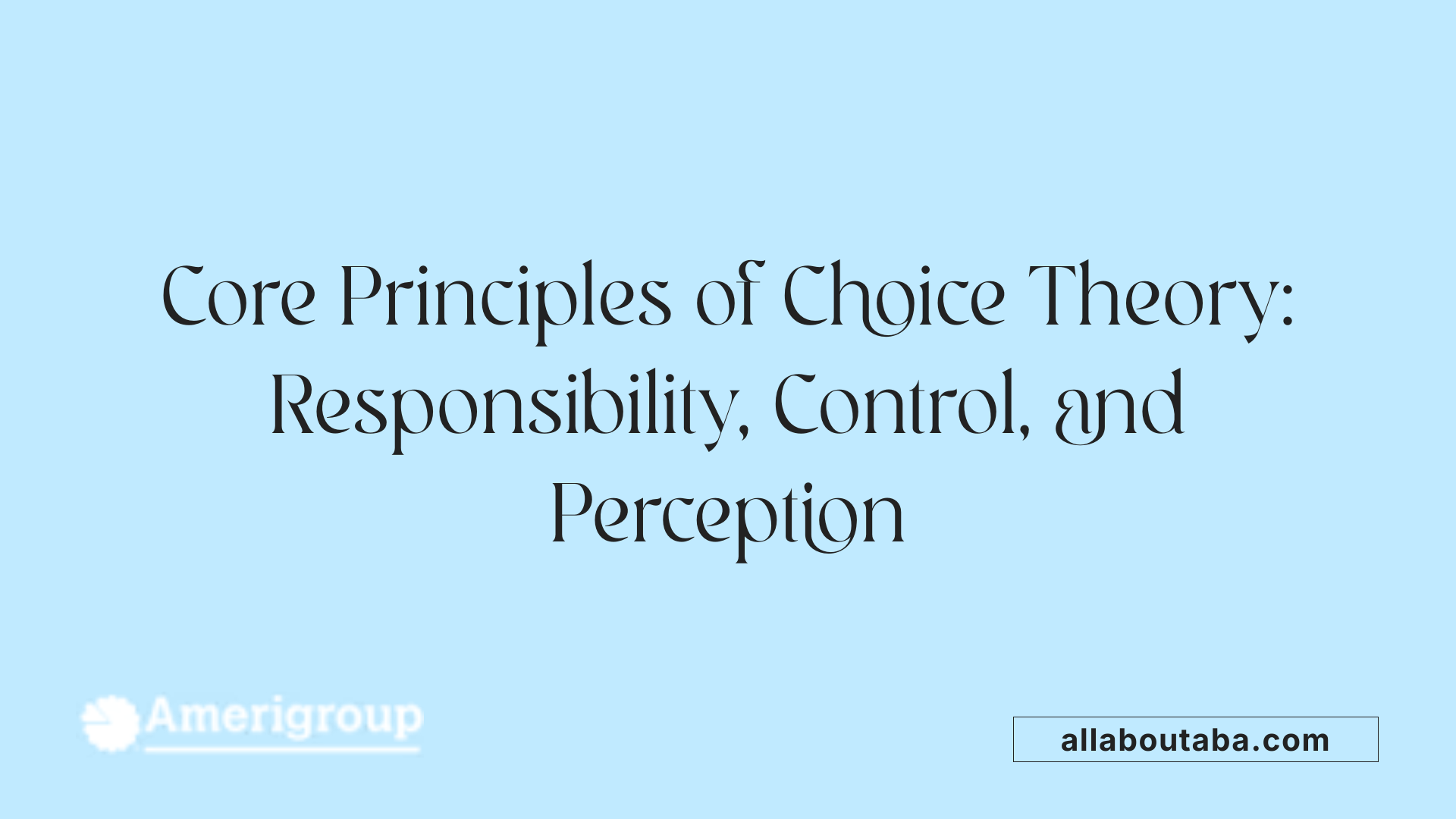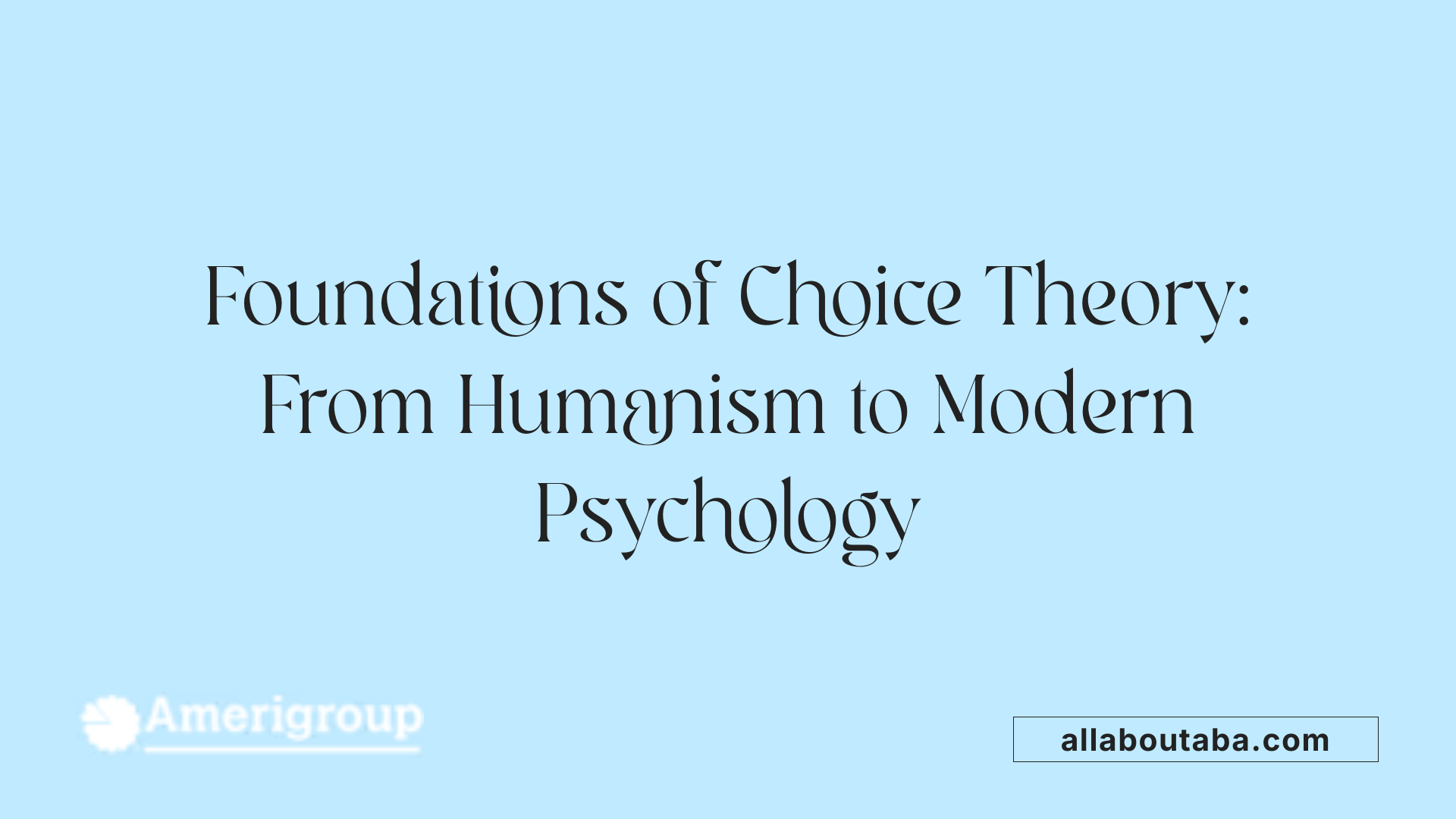What Is Choice Theory?
Unveiling the Foundations of Choice Theory
Choice Theory is a comprehensive psychological framework developed by William Glasser that offers a unique perspective on human motivation, behavior, and relationships. Rooted in the idea of personal responsibility, it emphasizes that individuals are responsible for their actions and can only control themselves, not others. This article explores the origins, principles, and practical applications of Choice Theory, providing insights into how it influences psychology, education, and human interaction today.
Defining Choice Theory

What is Choice Theory and how is it explained?
Choice Theory is a psychological approach created by Dr. William Glasser. It helps explain human behavior by emphasizing that people act based on internal motivations driven by five basic needs: survival, love and belonging, power, freedom, and fun. The theory states that all behavior is purposeful, aimed at fulfilling these needs, and that individuals are responsible for their own choices.
A core idea is that humans have control over their actions and perceptions. Glasser asserts that only the acting and thinking parts of behavior are directly controllable. Feelings and physiological responses are influenced by these controllable aspects but are less directly modifiable. This means people can change what they do and how they think, which can lead to changes in their feelings and physiological states.
Two important concepts in Choice Theory are the 'Quality World' and 'Total Behavior.' The 'Quality World' is a mental picture or a collection of images that represent what an individual deeply desires—such as relationships, achievements, or possessions. These images help meet their basic needs by guiding choices and behaviors.
'Total Behavior' refers to the complete scope of human actions, which includes acting, thinking, feeling, and physiology. According to Glasser, people have control mainly over their acting and thinking. By intentionally changing these aspects, individuals can influence their feelings and physical responses.
How does control relate to perceptions?
Perceptions, or how individuals interpret their experiences, are subjective and shaped by personal knowledge, values, and senses. Choice Theory underscores that perception is varied and can often be inaccurate. Recognizing this subjectivity is vital because our perceptions influence how we respond to others and meet our needs.
In summary, Choice Theory teaches that human behavior is within our control and driven by internal needs. By understanding its main components—the 'Quality World' and 'Total Behavior'—and realizing the power over our own acts and thoughts, individuals can take responsibility, improve relationships, and enhance life satisfaction.
The Fundamental Human Needs in Choice Theory

What are the five basic needs according to Choice Theory?
In Choice Theory, developed by William Glasser, human behavior is primarily motivated by five essential needs. These needs are considered universal, innate, and drive the choices people make throughout their lives. They form the foundation for understanding why individuals act the way they do.
The five basic needs are:
| Basic Need | Description | Examples |
|---|---|---|
| Survival | This is the most fundamental need, covering essential physical requirements for life. It includes necessities such as food, water, shelter, health, and safety. Without meeting this need, individuals cannot function effectively, making it the top priority of human motivation. | Access to nutritious food, safe living environment, medical care |
| Love and Belonging | Humans have a deep need to form meaningful relationships, feel accepted, loved, and part of a community. This need influences emotional well-being and fosters connection with family, friends, and social groups. Satisfying this need helps prevent feelings of loneliness and emotional distress. | Close family bonds, friendships, romantic relationships |
| Power | The desire for achievement, recognition, competence, and a sense of worth falls under this need. It drives individuals to succeed, gain status, and feel effective in their pursuits. Fulfilling the power need boosts confidence and personal value. | Success at work, acknowledgment, mastering new skills |
| Freedom | Autonomy and independence are central to this need. People seek the ability to make their own choices, control their lives, and feel free from undue restrictions. Meeting this need enhances personal control and reduces feelings of helplessness. | Deciding on lifestyle choices, pursuing hobbies |
| Fun | The need for enjoyment, Play, and creative expression motivates individuals to seek pleasure and satisfaction in their activities. This need encourages relaxation, recreation, and joyful experiences, balancing work and personal life. | Recreational activities, hobbies, entertainment |
All these needs are ongoing and influence behavior constantly. While the ways to meet them may change over time, the needs themselves remain constant, guiding human actions and decisions.
In summary, recognizing these five basic needs helps us understand human motivation and behaviors from a choice-based perspective, emphasizing personal responsibility and the pursuit of fulfilling one's natural motivations.
Core Principles and Concepts of Choice Theory

What are the fundamental principles and concepts of Choice Theory?
Choice Theory is based on the idea that all human behavior is purposeful and aimed at satisfying five basic needs: survival, love and belonging, power, freedom, and fun. These needs are universal and constant, but the ways in which individuals seek to meet them can vary greatly.
A central principle of the theory is that individuals can only control their own behavior, not that of others. This emphasis on personal responsibility is vital for mental health and healthy relationships. Glasser, the creator of the theory, argues that understanding that we are responsible for our choices can lead to more positive behaviors and better relationships.
The theory introduces the concept of the 'Quality World.' This mental space contains images and ideas of what individuals most desire, including relationships, possessions, and beliefs. Our 'Perceived World'—which is subjective—is shaped by our senses, knowledge, and personal values. Our perceptions influence the choices we make as we try to meet our needs, even if those perceptions are sometimes inaccurate or distorted.
Behavior in Choice Theory encompasses acting, thinking, feeling, and physiology. Collectively called 'total behavior,' these components are interconnected. Glasser states that people have control over their acting and thinking, and by choosing their behaviors consciously, they can influence their feelings and physiological responses.
The ten axioms of Choice Theory serve as foundational principles. They include ideas such as controlling only one’s own behavior, that all behavior is purposeful, and that our relationship problems often underlie mental health issues. These axioms guide individuals in understanding their motivations and making responsible choices.
In summary, the core ideas of Choice Theory highlight that human behavior is driven by internal needs and choices. Recognizing this allows individuals to take responsibility, control their actions, and improve their relationships—ultimately leading to greater satisfaction and well-being.
Philosophical and Historical Foundations

What is the philosophical foundation of Choice Theory?
Choice Theory is grounded in a human-centered philosophy that emphasizes personal responsibility and the purposeful nature of behavior. It asserts that individuals have control over their actions and feelings, motivated primarily by five basic needs: survival, love and belonging, power, freedom, and fun. The theory views behavior as purposeful, with people constructing their own reality through perceptions influenced by their values and knowledge. This internal 'quality world' contains mental images of what individuals find meaningful, guiding their actions to satisfy these needs.
According to Choice Theory, behaviors are driven by the desire to create a personal reality that promotes well-being. By focusing on our acts and thoughts—elements we can control—we have the power to change our emotions and physiology, which in turn affects how we meet our needs. This perspective encourages responsibility and intentionality in behavior, fostering a belief that happiness and fulfillment come from choosing better actions aligned with our internal desires.
The philosophy promotes that true control comes from within, countering external control psychology, which is deemed destructive. It underscores the importance of understanding oneself, taking responsibility for choices, and consciously working to improve personal and relational well-being.
What is the historical development of Choice Theory?
The origins of Choice Theory trace back to William Glasser’s decades of work in psychology and counseling, with its core principles crystallizing around 1980. Initially, Glasser introduced Reality Therapy in 1965, focusing on present behaviors and personal responsibility, which later evolved into the more comprehensive framework of Choice Theory.
His theory was developed through a synthesis of clinical experience and research spanning about 50 years. Glasser’s focus shifted from external causes of behavior to internal motivations rooted in innate needs. He emphasized that behaviors are choices made to satisfy these needs, with a particular focus on the significance of relationships.
Glasser challenged traditional external control psychology—an approach he criticized for damaging relationships and promoting disconnection. Instead, he proposed that respecting individual needs and promoting internal control could improve mental health and behavior.
The dissemination of Choice Theory was facilitated through his seminal book "Choice Theory: A New Psychology of Personal Freedom" and the establishment of William Glasser International. Today, the theory influences various fields like psychology, education, and management, continuing to promote a humanistic approach centered on choice and responsibility.
| Aspect | Description | Additional Info | |----------------------------|-----------------------------------------------------------|-----------------------------------------------------------| | Origin | Developed by William Glasser over 50 years | From Reality Therapy to full Choice Theory | | Core Principle | Behavior driven by internal needs | Focus on personal choice and responsibility | | Main Focus | Internal control over behavior | Relationship enhancement and personal agency | | Impact | Influences psychology, education, counseling, management | Promotes positive, responsible decision-making | | Key Publications |
Application and Relevance in Modern Fields
What is the relevance of Choice Theory in education and psychology?
Choice Theory, developed by William Glasser, holds significant importance in both education and psychology today. It centers on the ideas of personal responsibility, self-control, and the meeting of basic human needs to foster motivation and healthy relationships. In educational settings, applying Choice Theory encourages students to select assignments and activities that resonate with their individual learning styles. This approach has been shown to boost student engagement, motivation, and academic success, supported by numerous studies.
In terms of classroom management, Choice Theory promotes fostering an environment where students are encouraged to make responsible choices. It emphasizes the importance of building supportive, relationship-rich environments that value respect and positive interactions. Schools like Great Valley Academy exemplify this by creating classrooms that prioritize meaningful learning and social-emotional well-being.
Overall, Choice Theory provides a practical framework that integrates psychological principles with teaching strategies. Its focus on meeting needs related to safety, belonging, and autonomy helps create educational spaces where students feel safe, respected, and motivated to learn. By emphasizing personal responsibility and relationship-building, Choice Theory enhances both academic performance and emotional health, making it highly relevant and valuable in modern educational and psychological practices.
Core Ideas and Practical Implementations
What are the key ideas and axioms of Choice Theory?
Choice Theory centers on the understanding that all human behavior is purposeful, aimed at satisfying five fundamental needs: survival, love and belonging, power, freedom, and fun. A guiding principle is that individuals have control only over their own actions, thoughts, and perceptions—never directly over others. This promotes personal responsibility for one's choices, emphasizing that we are the architects of our own lives.
A foundational concept is the 'Quality World,' which is a mental space containing images, ideas, and desires of what individuals want for themselves and others. Our behavior is driven by attempts to align our perceived world with this internal vision. Perceptions of reality are subjective and shaped by past experiences, beliefs, and values, which influence how we interpret our environment.
The ten axioms of Choice Theory reinforce these ideas. They highlight that only our own behavior can be controlled, that all behavior is purposeful, and that most mental health issues stem from relationship problems. The axioms advocate for internal control, responsibility, and the pursuit of personal fulfillment through responsible decision-making.
Practical tools like Reality Therapy—derived from Choice Theory—support individuals in making better choices to meet their needs, fostering healthier interactions and emotional well-being.
What are the destructive habits that control people and cause misunderstandings?
A significant aspect of Choice Theory is identifying behaviors that sabotage relationships and create conflicts. It describes seven Disconnecting Habits—criticizing, blaming, complaining, nagging, threatening, punishing, and rewarding to control—that tend to increase disconnection and misunderstanding.
These habits are considered destructive because they undermine trust, diminish connection, and often escalate conflicts. They are rooted in external control psychology, where individuals attempt to manipulate others rather than accept personal responsibility.
To cultivate healthier relationships, Choice Theory promotes adopting seven Connecting Habits—supporting, encouraging, listening, accepting, trusting, respecting, and negotiating differences. These habits foster open communication, mutual respect, and understanding, thereby reducing misunderstandings and strengthening bonds.
By replacing control-based behaviors with relationship-building habits, individuals can improve their interactions at home, work, and in the community, leading to more satisfying and meaningful relationships.
Transforming Lives Through Personal Responsibility
Choice Theory offers a powerful perspective on human motivation and behavior, emphasizing personal responsibility, self-control, and the importance of meeting basic needs for a fulfilling life. Its principles have wide-ranging applications in counseling, education, management, and interpersonal relationships. By understanding the core concepts of the 'Quality World,' total behavior, and internal control, individuals can take charge of their lives, improve their relationships, and foster greater satisfaction. As a human-centered philosophy, Choice Theory encourages us to see ourselves as active agents capable of making meaningful choices, ultimately leading to healthier, happier lives.
References
- What Is Choice Theory? - GIFCT - William Glasser Institute
- Glasser's choice theory - Wikipedia
- Choice Theory Basics | learnonline - UniSA
- What is Choice Theory? - Applied Behavior Analysis Programs Guide
- [PDF] Introduction to Choice Theory
- Quickstart Guide to Choice Theory - GIFCT - William Glasser Institute
- Choice Theory
- Choice theory: A new psychology of personal freedom. - APA PsycNET
Other articles
Recent articles

Autism-Friendly Workplace Accommodations

Using Visual Timers For Autism Time Management

What Is Choice Theory?

What Is Ambitions ABA?

What Is ABA Therapy?

Autism and Sleep

Do Plastic Toys Cause Autism?

Autism Facial Expressions

Autism and Motor Skills

Which Parent Carries The Autism Gene?

Autism Symbols & Colors

Rett Syndrome: Symptoms, Causes, and Treatment

Self-Diagnosed Autism

Autism and Sound Sensitivity

Autism With Speech Delay

Autism Complications

Clothes For Children With Autism

Group Homes for Autistic Adults

Calming Strategies For Kids With Autism

Sensory Integration Therapy & Autism

CBD Oil for Autism

Autism and Dyslexia

Tylenol Linked to Autism & ADHD

Theory Of Mind Autism

Autism And Impulse Control

Autism In The United States

Registered Behavior Technician (RBT) Cover Letter

Do Amish Kids Get Autism?

Environmental Causes & Risk Factors Of Autism

Is it Worth Getting An Autism Diagnosis?

Do Autistic People Understand Sarcasm?

Maternal Obesity and Autism's Connection

What Is Defeat Autism Now?

Why Do Autistic People Like Trains?

North Carolina Autism Resources

Autism and Bed Wetting

Average Registered Behavior Technician (RBT) Salary

Autism Awareness Month

Autism In Russia

Going To College With Autism

What Is Autism Society Of Indiana?

Autism In Women

Screen Time and Autism

Is Tom Cruise Autistic?

World Autism Month

Can Cats Have Autism?

Low-Functioning Autism

Does Cerebral Palsy Cause Autism?

Autistic Brain vs Normal Brain

Arizona Autism Resources

Does The Good Doctor Have Autism?

Autism In Boys vs. Girls

Nonverbal Autism

What is the Sensory Processing Disorder ICD-10 Code?

Autism And LSD/Psychedelics

Do Baby Monitors Cause Autism?

Individualized Education Programs (IEPs) for Autism

Autism and Narcissism

Social Communication Disorder vs. Autism

Autism Prevalence In North Carolina

Is Autism Genetic?

Risperidone for Autism

Temper Tantrums A Sign Of Autism

Autism Apps For Children

Breastfeeding And Autism

Oxytocin's Link To Autism

How To Become an RBT

Free ABA Therapy Services for My Child With Autism

Autism And Deafness

Jobs for People on the Autism Spectrum

Can Dogs Have Autism?

What is an AAC Device for Autism?

Autism And Picky Eating

How To Prevent Autism

Book, Movie, and TV Characters on the Autism Spectrum

Tourettes And Autism

Teaching Math To Students With Autism

What is Autism Scripting?

BCBA vs. BCaBA

Tylenol Autism Lawsuit

Autism In Europe

Medication for Autism

Why Do Autistic People Rock?

Interventions For Autism

Autism During Pregnancy

Eating Disorders And Autism

Is Everyone On The Autism Spectrum?

What Is The Autism Wheel?

Speech Delay vs. Autism

PANS/PANDAS in Children with Autism

Who Made Autism?

Why Is Autism Increasing?

What Is Play Therapy For Autism?

Excessive Blinking in Children with Autism

Does Aluminum Cause Autism?

The Double Empathy Problem In Autism

What Is Social Skills Training (SST) For Autism?

Autism and Migraines/Headaches

Best RBT Career Path

Marijuana and Autism
We’re All About You, Your Family, and Your Child

